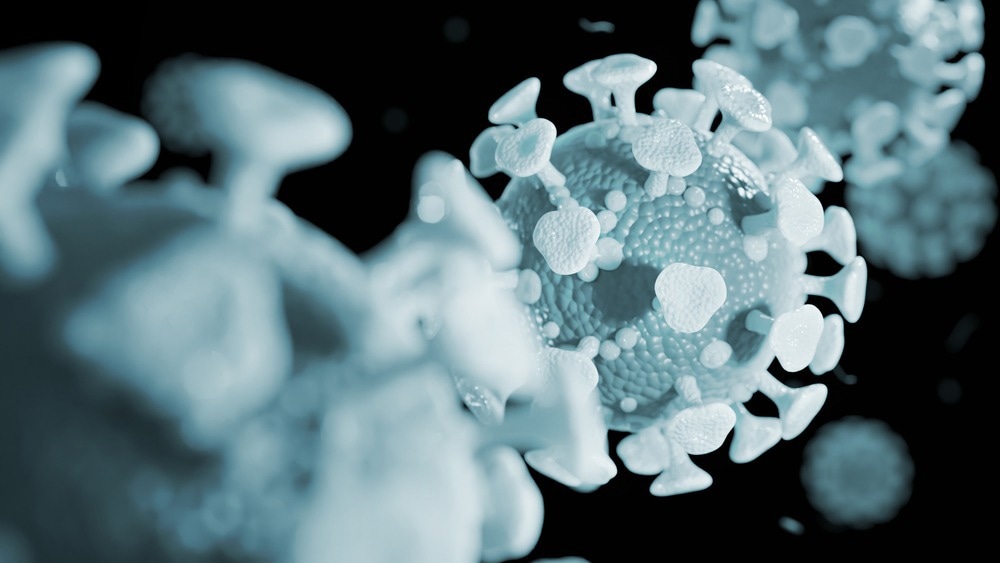In a recent study posted to the medRxiv* preprint server, researchers assessed the impact of severe acute respiratory syndrome coronavirus 2 (SARS-CoV-2) infection on cell death and fusion in immunocompromised hosts.
 Study: SARS-CoV-2 evolves increased infection elicited cell death and fusion in an immunosuppressed individual. Image Credit: Dotted Yeti/Shutterstock
Study: SARS-CoV-2 evolves increased infection elicited cell death and fusion in an immunosuppressed individual. Image Credit: Dotted Yeti/Shutterstock

 *Important notice: medRxiv publishes preliminary scientific reports that are not peer-reviewed and, therefore, should not be regarded as conclusive, guide clinical practice/health-related behavior, or treated as established information.
*Important notice: medRxiv publishes preliminary scientific reports that are not peer-reviewed and, therefore, should not be regarded as conclusive, guide clinical practice/health-related behavior, or treated as established information.
About the study
In the present study, researchers estimated the induction of cell fusion and death during long-term SARS-CoV-2 infection.
To evaluate the immunological response to SARS-CoV-2 infection, the team isolated a live virus from a patient suffering from advanced human immunodeficiency virus (HIV) illness who was included in the longitudinal cohort.
The study cohort was sampled as soon as possible after diagnosis, within the first month after diagnosis, and at three-month intervals thereafter. The team performed quantitative polymerase chain reaction (qPCR) using nasopharyngeal as well as oropharyngeal swabs for six months after diagnosis, with virus isolation beginning on day six post-diagnosis (D6).
The team used the isolated viruses to express the human H1299 lung cell line that overexpressed the ACE2 receptor. Time-lapse microscopy was performed with CO2 and temperature-controlled cells. A second assay was utilized to identify cell death occurring 24 hours post-infection (hpi).
The infection was identified by staining for the SARS-CoV-2 nucleocapsid protein, and the proportion of infected cells that had died was measured by co-staining using a death detection dye. Since cell-cell fusion depends on the expression of the cell surface spike protein, the researchers examined surface spike expression on infected cells 18 hpi generated by live virus on a confluent cell monolayer.
Results
The team detected continuous SARS-CoV-2 infection in the participant with advanced HIV. D6 demonstrated low to moderate immune evasion in the plasma samples collected from convalescent people who had previously reported infection with either the SARS-CoV-2 wild-type strain or the Beta or the Delta variants. However, D190 demonstrated a more broad immunological escape from the ancestral strain and neutralizing antibodies induced by the Delta variant.
The phylogenetic study revealed a pattern compatible with the evolution of a single ancestral virus infection. Viral isolates obtained on D6, D20, D34, D106, and D190 revealed alterations in spike as well as other viral genes in comparison to the ancestral strain. Notably, neutralization escape mutation E484K and numerous other variants were present in D6, while neutralization escape mutations K417T and F490S51 were present in D190.
The uninfected cells proliferated up to the point of confluence with little signs of cell death and cell fusion. On the other hand, SARS-CoV-2 wildtype-infected cells exhibited cell fusion as well as cell death, and/or an absence of cell division 12 hpi. These changes appeared less significant in Omicron BA.1-infected cells and early D6 isolates. However, compared to BA.1 and D6, the D190 isolate from six months later exhibited higher fusogenicity and cytotoxic/cytostatic properties.
Quantifying fusions across numerous separate experiments revealed that the frequency of fusions in uninfected cell cultures was low and did not improve over time. Infection with the D614G virus increased the frequency of cell fusion, with around 40% of cell nuclei fusing 36 hpi. The number of fusions was consistently reduced with BA.1 infection, reaching less than half that of D614G infection.
Comparing BA.1 infection to that of the ancestral virus, the team found that while the proportion of infected cells was comparable and somewhat higher in BA.1 than in the ancestral virus, the proportion of infected cells stained positively for the death detection dye was significantly lower in BA.1.
The team noticed that surface spikes were readily detectable in unpermeabilized cells. On the other hand, nucleocapsid protein was not found on the cell surface, despite its high amounts following permeabilization. The spike expression of the two ancestral viral isolates was comparable. BA.1 infection resulted in a drastically reduced cell surface spike, whereas BA.5 infection led to a mild increase in levels. D190 infection had a considerably lower surface spike than the ancestral virus isolates, whereas D6 infection had a higher surface spike.
Conclusion
Overall, the study findings showed that the virus present relatively early phases in the infection resulted in cell fusion and death at comparable levels to SARS-CoV-2 Omicron BA.1 infection. Nonetheless, the virus that evolved across six months of infection exhibited fusogenicity at levels intermediate between wild-type and BA.1 infections, while cell death induction was more similar to that in D614G infection. This indicated that according to these parameters, the virus did not exhibit attenuation during its evolutionary course.

 *Important notice: medRxiv publishes preliminary scientific reports that are not peer-reviewed and, therefore, should not be regarded as conclusive, guide clinical practice/health-related behavior, or treated as established information.
*Important notice: medRxiv publishes preliminary scientific reports that are not peer-reviewed and, therefore, should not be regarded as conclusive, guide clinical practice/health-related behavior, or treated as established information.